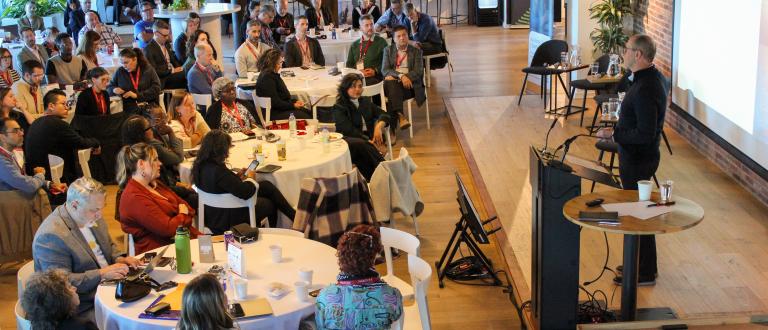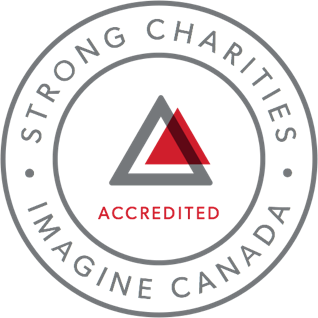Understanding what behaviours to look for is key in evaluating staff contributions to workplace culture.
In the first part of this blog series, Strengthening your workplace culture: identifying staff values, we discussed how you can develop staff values that accurately describe your organization and break them down into actionable behaviours.
This next installment goes discusses implementing evaluation processes based on these values.
Select your 360 evaluators
Successful 360 evaluations depend on a wide variety of perspectives. Evaluators should include supervisors, direct reports, peers, volunteers and clients or customers (if applicable). To start off, consider the following questions:
- What are some guidelines that would help your staff identify a good pool of evaluators? Think about the organizational structure and work relationships in your organization. Do you have remote employees who will be part of the process?
- How many direct reports do employees have on average? Are there employees who work at a distance from the organization’s primary operations, or rarely have the opportunity to work in teams? These scenarios will require extra attention to ensure a high quality pool of evaluators.
- On the other hand, be careful not to overburden staff with their evaluation responsibilities. You might have an employee with 10 direct reports who works actively with other parts of the organization. That person would then be asked to evaluate 20+ people. Is it reasonable to include them in your evaluator pool?
These questions don’t have one right answer. The course you choose depends entirely on your organization. What’s most important is having a method in place to deal with flaws and concerns. At Imagine Canada, the internal HR Advisory Group openly discussed any issues that arose throughout this process. We would dig deeper until we were satisfied with our decision. More issues will likely arise once this evaluation is put in place for the first time, but the group is looking at this initial round as a trial run.
Choose your technology
Test the process with tools you have access to, to ensure you know exactly what you need to implement a new evaluation system. For example, you may want to consider
- Creating surveys through online tools such as Qualtrics pr Survey Monkey
- Going old school with a paper version
- Creating an Excel Workbook for each review
- Investing software designed specifically to conduct these kinds of reviews
It's important to keep in mind the sensitivity and privacy of this information. Who gets to see documentation related to the review process, and what kind of information do they have access to? Consider everything from the flexibility of question design to how the software exports results and tracks progress.
Gain buy-in across the organization
Directives for implementing this kind of process have to come from the top leadership of the organization, and should not be a simple, “You have to do this because research shows…”
Instead, focus on articulating why it would be beneficial to staff for them to take part in the evaluations. (This is something you should have had in mind even before creating this assessment). Tune into their values and needs to show how they can benefit from investing time in this process.
Be very clear about the goals. Do you want employees to identify gaps between their self-perception and how others perceive them? Do you want to measure how staff adhere to the values of your organization? The latter has potential to be included in performance management process. However, it will likely take more than one round of evaluations to get it right.
Promote transparency and trust
To ensure transparency and trust in the process, similar training should be given to everyone, regardless of their job title. Depending on the size of your organization, try to find time where you can train all staff together (a staff retreat, organization-wide meetings, department-wide meetings, etc).
This training should be delivered by an HR professional. If you don’t have one in-house, then invite a volunteer or hire a consultant that suits your organization’s culture. If bringing in someone external, be sure to provide them with all of the details before they face the staff.
Training is key to this implementation process. Staff should leave the training with a full understanding of every step of the assessment. Do you need them to pick their evaluators next? Explain how. You don’t want people going into this process without understanding why they are doing it and how to do it.
Gather feedback on the process
Basing the review on culture instead of performance puts everyone at the same level. The only difference between supervisory and non-supervisory staff is that the supervisors have to give feedback to their reports. When it comes to these feedback sessions, the biggest challenge is ensuring that statements are relevant and constructive. Supervisors should discuss their direct report’s results with them and address possible improvement points.
I created feedback guidelines that will help you get an idea of what you need to address in this session. There should be a process in place to make sure supervisors are doing their best. It could be an anonymous feedback space, or a direct discussion with the HR team to ensure the quality of supervisors’ assessment abilities. Find what suits your organization best.
In order to evaluate an organization’s culture, you have to study it first to know what you are looking for. This process is very unique to every organization, so try to learn what your employees’ preferences are. Do they prefer to discuss feedback openly? Do they prefer being trained one-on-one or as a group? Get to know them, and help them make this assessment their own.
All the best in your pursuit of embedded staff values!




